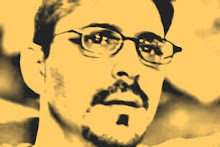Sonneteering
In Ross Feld’s Philip Guston, we find the following story elaborated by Guston himself:
“I came into the loft one day and I tacked up a canvas on the wall…a very old loft full of dirty skylights and a lot of crap around, [and] I thought, I’ll just paint what I see, don’t think. So I painted the whole loft, like one of those Matisses—easel, broken chairs, electrical wire hanging down, all the way right up to my hand below painting it. I worked steadily for eight hours without stopping. I ran across the street, got my wife. Look at that, I can paint. It’s as good as a Bonnard. I was really upset. This denied everything I was doing….I had a hard time sleeping that night. I was very upset; where do I go; is this a new career, or what?...I came in the next morning and there was nothing there—literally nothing there. There was a representation of all this, but it seemed like a fake, faked up, because it didn’t seem real. It didn’t seem concrete. It didn’t seem to have any life of its own. All it did was represent something, and depended on all this recognition, like you have to be briefed on it, like, oh, yes, a chair, a torn cloth, oh, yeah, a broken mirror. It was composed nicely; it flowed and moved through one part into the other, all around your eye moved nicely, absolutely satisfying as a painting. Well, then, naturally, I proceeded to destroy it."
Guston rejected the bona fide conditions and virtues of the classical tradition, perhaps most usefully reduced to the name “Bonnard.” He had achieved what we know as “good painting,” i.e., that which fit snugly into a preformed aesthetic niche. “Composed nicely” meant nothing less than the “absolutely satisfying,” which relied upon a given or standard set of assumptions held by both painter and viewer alike. The painting behaved in formally predictable ways.
In this small passage, Guston’s way of speaking about painting evidences a curious outlook. The representative image—the image in crisis—“seemed like a fake, faked up,” “didn’t seem real,” “didn’t seem concrete,” and, most importantly, “didn’t seem to have any life of its own.” What do we make of a representative image that no longer holds the authority of concretion?
Once powered by the classical tradition, the image could no longer stand for the real in any critical or vital way. In terms of language, the historical antagonism between verba and res, between word and thing, itself stood on shaky ground. For Guston, the representation or image announced itself as such: a mere representation rather than an object in its own right, without any “life of its own,” as both Zaller and Rexroth have written about abstraction in the early postwar era, well before Western culture took its so-called linguistic turn. As it turned out, an object in its own right that had a “life of its own” was both concrete and abstract at once. The maker was the same kind of thing as the made, the latter an extension of the former. Radically underwritten by the problem of representation, discursivity always already produced “a fake, faked up.”
I return to Guston often. Last night, I sat down to write a sonnet, and I mean a traditional sonnet, which I hadn’t attempted in many years. I believe it was Sidney who likened a solid metric to good horsemanship—or chops, as it were—and I was curious as to how I’d measure up. I won’t post the results here, but it took only two uninterrupted hours to produce the poem, at which I retrospectively nitpicked with little to show for such efforts. My ultimate response: “I can paint,” but I wasn’t as upset as Guston at his “Bonnard,” which probably speaks to my early lack of success in the arena of traditional verse. Juggling the elements of a sonnet proved, in the early going, impossible. At the moment, frankly, I feel more uncomfortable with a self-comparison to Guston than I do with the formally traditional constraints of any poem.

